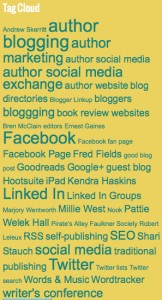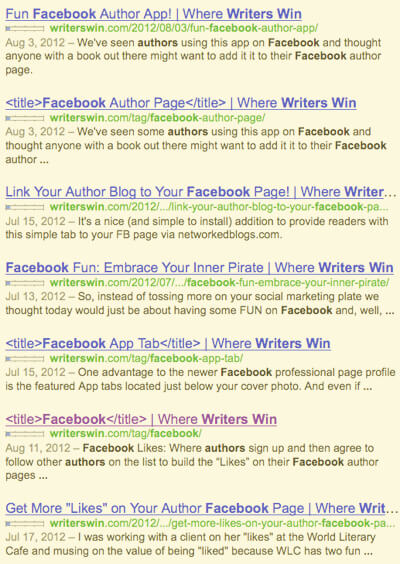 Tagging your blog content is a task that can befuddle authors. When we’re already categorizing blog posts, and creating great headlines, and putting in meta descriptions, why do we also need tags? What are tags? Why spend any time on them and what purpose do they serve?
Tagging your blog content is a task that can befuddle authors. When we’re already categorizing blog posts, and creating great headlines, and putting in meta descriptions, why do we also need tags? What are tags? Why spend any time on them and what purpose do they serve?
In a nutshell, tagging a post lets you point out, mark or “tag” certain keywords within your post. You can add as many tags as you’d like and it helps readers find similar content easier, drilling down further than they might be able to with your more general categories.
In example, you’ll see our categories listed on the right hand side of this post that include the basic subjects under which we blog, such as blogging tips, author marketing, social media, author websites, etc. Yet there are many topics we write about that don’t necessarily require their own category, but do recur in tags. So if we mention Facebook in a post, we can tag that, and if you search for Facebook on our site (or click on it in our tag cloud at the bottom of the page) you’ll get a look at all our posts where we’ve included a Facebook tag.
Why bother? Because if you read a post, say the post we wrote on building a Facebook Page, and enjoyed it, you might also enjoy reading about how to get more likes on your Facebook page, or any of a number of other posts that refer to how authors are optimizing their Facebook experience.
 Tagging posts with appropriate keywords also makes it easier for Google to find them, which increases the chance of your words being found by your potential readers (see our Facebook example at left). When you create tags for your posts, you’re also creating new pages for your blog that are easily indexed, ranked and searched; you’re instantly creating additional searchable content!
Tagging posts with appropriate keywords also makes it easier for Google to find them, which increases the chance of your words being found by your potential readers (see our Facebook example at left). When you create tags for your posts, you’re also creating new pages for your blog that are easily indexed, ranked and searched; you’re instantly creating additional searchable content!
When you use tags repeatedly, they’ll show up bigger on your installed tag cloud widget (see example top right), which creates more “link juice” to those tag pages, increasing their importance so they’ll rank higher on search engines.
But tagging also lets you highlight keywords that you know won’t be used often, but still deserve some extra attention and that may fall outside the parameters of your categories. In example, if we mention a famous author appearing at a conference, such as Ernest Gaines attending the Words & Music festival; we’ll tagboth. Neither are topics we write about regularly, but both deserve the tags and to appear in search results for folks searching for writers conferences or where Ernest Gaines may be appearing.
And, when we write something else about either Ernest or Words & Music, we can choose from the tags we’ve already created, allowing us to quickly and easily provide more searchable content for fans of this author or this event!
On Friday we’ll offer up several tips to make the most of your own tags, including the value of tagging photos. Stay tuned…

Thanks for giving me another great article to share with my author networks…doing so now!
Sandra Beckwith
I think I get it, but what if I write a blog about anything and everything. I write a more-or-less “What’s on my mind this week” kind of blog–no resonding theme. I don’t think any tags would repeat themselves. Is that okay?
It is, though likely some themes will emerge as your purpose is also to bring you the audience you had in mind when you wrote your book 🙂
Thanks!
Thanks for this explanation of tags, how to select them and their importance. Knowing this essential information helps us get our message out to those seeking it, and that’s the whole point, isn’t it.
It is, it is!
Interesting. I think I’ve been doing it wrong!!!